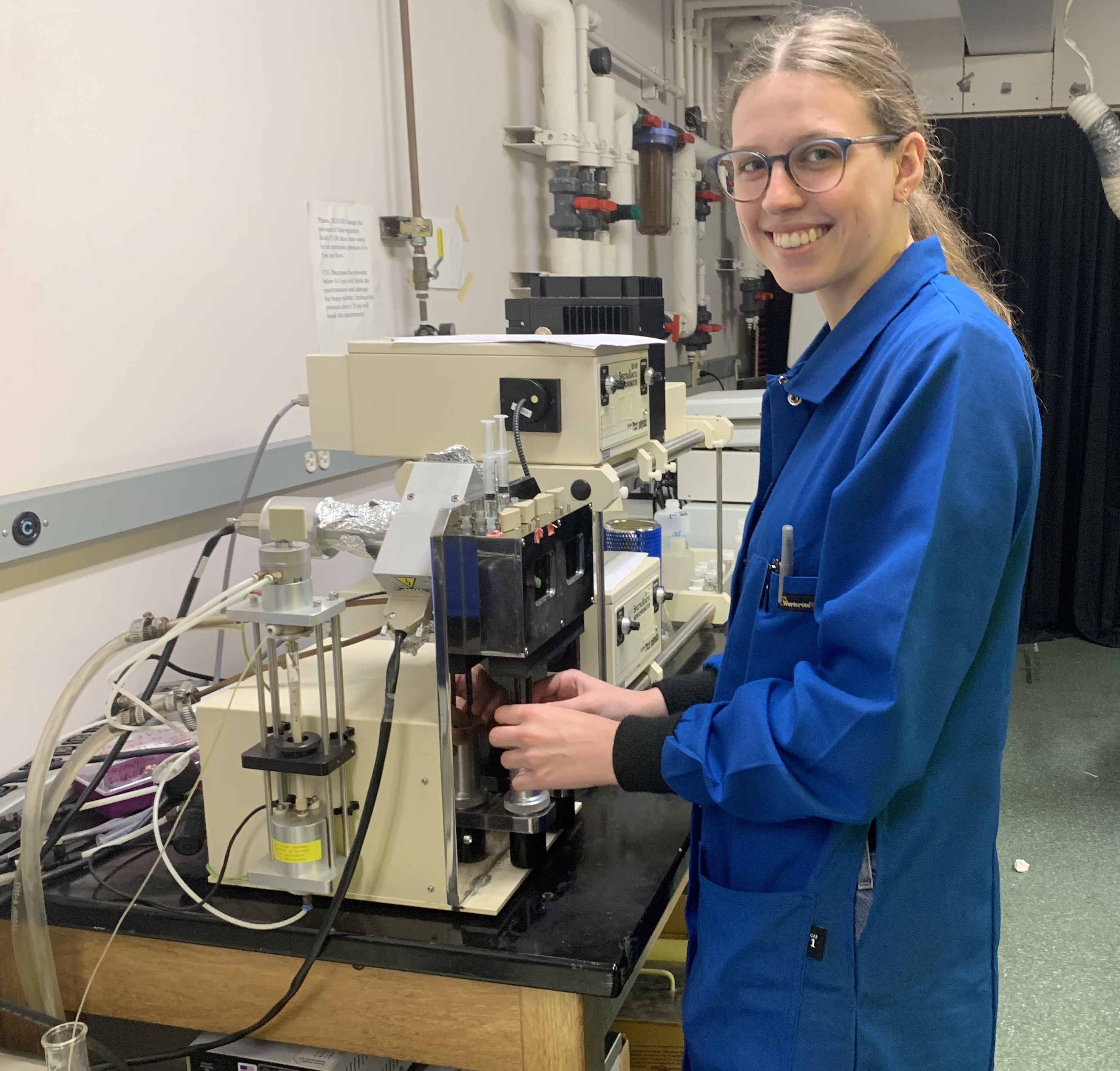
has recently been found that carbon monoxide (CO) exhibits some anti-cancer properties when released into tumor cells. This has produced interest in a group of compounds called CORMs, or CO releasing molecules. Our study has been of the manganese complex fac- [Mn(CO)3Br(bpy(COOH)2)] and the mechanism of its CO-releasing reaction when exposed to hydrogen peroxide, which is found at high concentration in tumor cells. There has been prior research done studying this reaction at near neutral physiological conditions from which two possible reaction mechanisms have been suggested. To gain more insight into the various pathways that may be occurring within the reaction, we have conducted our study under significantly more basic conditions. The reaction has primarily been investigated via kinetics studies through the use of stopped-flow spectrometry, which allows us to observe the reaction on very short time scales. Our results have indicated that the reaction is first order in both H2O2 and the manganese complex, indicating an overall bimolecular reaction. The temperature dependence of the reaction was also examined which yielded an activation energy indicative of a lower sensitivity to temperature under basic conditions when compared to near neutral conditions. Further results of our kinetics studies show that the reaction is dependent on base, however significantly less so than would be predicted by the proposed models. From this we can conclude that there are two species initially reacting with the manganese complex, both H2O2 and the deprotonated HOO- species. The mechanism of this reaction has proven to be very complex and much of it still remains uncertain. Future work on this project will involve synthesizing similar manganese complexes designed to inhibit specific reaction pathways in order to compare their behavior in terms of the reaction mechanism.